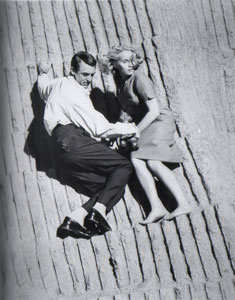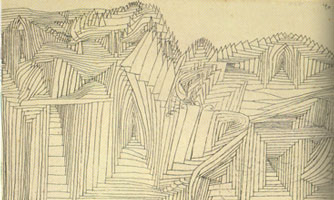|
|
|
Paul
Klee, who was born in 1879 and died in 1940, was a Swiss Expressionist whose
work had many affinities in Surrealism, especially in its interest in dreams,
‘primitive’ art, and mythology. Hitchcock’s fleeing couples
usually have to negotiate their way through treacherous labyrinths that often
include large monuments (the Statue of Liberty in Saboteur, Mount Rushmore
in North by Northwest). Paul Klee, whom Hitchcock claimed as one
of his favorite painters (and whose original paintings decorated Hitchcock’s
home), created a mold for the Mount Rushmore set in his drawing Rock Temple.
The monumental streaked drawing with its parallel lines resembles the
surface of the Mount Rushmore set on which the climax of North by Northwest
occurs. The juxtaposition here of the small characters and the large monument
is an important part of Hitchcock’s style of suspense. The architectural
perspective shown in Klee’s drawing was an important aspect of Modernist
art in the 1930’s and in many of Hitchcock’s films. The labyrinthine
Rock Temple’s jagged edges are reminiscent of the recurring Hitchcockian
moment of a character dangling over a chasm, as in Vertigo, Young
and Innocent, and North by Northwest. |













